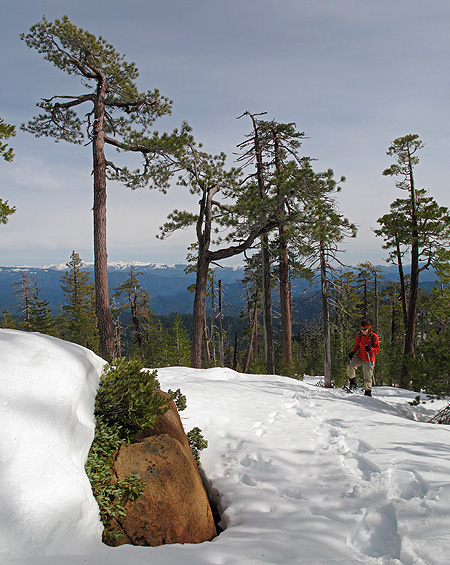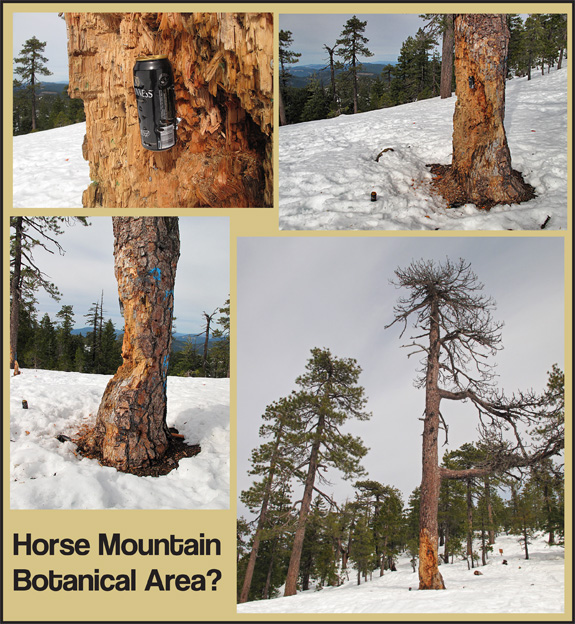Original Publication DATE: 2/14/2010 3:14:00 PM
Venturing east on Highway 299 from Humboldt Bay, a stark transition–rarely noticed by travelers–occurs at Berry Summit (2900 ft). Leaving the Coast Range and entering the Klamath Mountains the landscape becomes defined by varied, complex rock types. One of these unusual rock types is known as ultramafic rock or more commonly as Serpentine. In North America, serpentine rock appears at the Earth’s surface most frequently in northwest California. The Horse Mountain Botanical Area (HMBA) is a celebration of the rock and climate that interact to create unique high elevation plant communities. In coastal northwest California, spring has arrived. Allison and I did not want winter to pass us by–we were ready for some snow play. Packing our snowshoes and lunch, we drove to the snow of the HMBA in the Klamath Mountains in less than an hour.
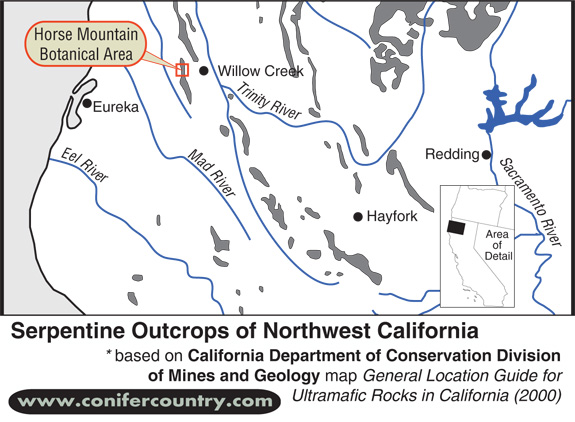
Discussed widely in other blogs, on my website, and also by the Forest Service–serpentine plant communities are unique because the rock is laden with heavy metals that make it difficult for plants to grow. Plants that do survive on serpentine are specially adapted to this soil and, through edaphic isolation, many have diverged into endemic species. Several unique coniferous-occurances in the HMBA (~4,800ft) warrant discussion here. First, Port Orford-cedars reach the southern extent of its range in the canyons of the botanical area. Also, this is surely one of the few places where one can stand amongst gnarled Jeffrey pines while pondering views across the Pacific Ocean. Jeffrey pines are characteristic of arid landscapes, but have survived at this location because of the harsh soil. This mountain sees an average of 50 inches of rain per year, far from what I would describe as arid. To appreciate the variety of plants that occur at Horse Mountain, explore the North Coast California Native Plant Society list.
Allison wanders through a snowy red-rock wonderland characterized by Jeffrey pine (Pinus jeffreyi), western white pine (Pinus monticola), sugar pine (Pinus lambertiana), knobcone pine (Pinus attenuata), Douglas fir (Pseudotsuga menziesii) white fir (Abies concolor), and incense-cedar (Calocedrus decurrens). There are also unique shrubs in the under story like the huckleberry oak (Quercus vacciniifolia) that is creeping from under the snow on the serpentine rock.
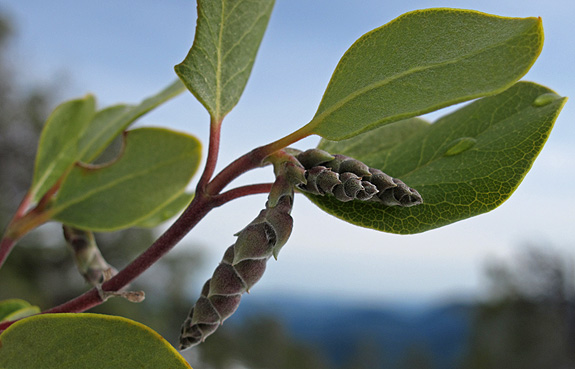
The power of a disturbed environmental context–propagated in the center of HMBA–has led to numerous behaviors that are in stark juxtaposition to the aesthetic beauty and awe the botanical area shares with the astute observer. Apparently, the Six Rivers National Forest lets its freedom-loving visitors target-shoot at will–often along well traveled roads. When trash and destruction are left behind–without clean up or guilt of action–the next visitor sees fit to repeat these behaviors. Trash is then repeatedly deposited and environmentally destructive behaviors repeat, promulgations continue further destruction and compounding refuse deposits, building…building…and eventually a culture begins to loose its sense of place. A genuine lack of understanding for the importance of our environment.
Sometimes I get the feeling that we, as Americans, have too many freedoms and entitlements. This Jeffrey pine met its death in only a few years of banal shrapnel fire. Is nothing sacred?
(Diatribe is over) continue on so as to not to end on a sour note…
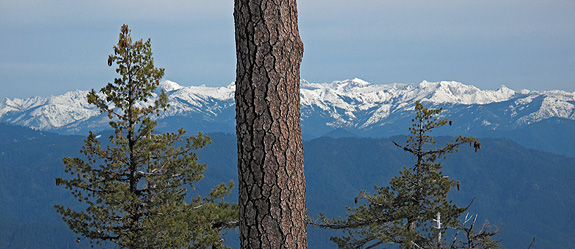
Views to Mount Shasta, the Yolla Bolly, Siskiyous, Pacific Ocean, and Trinity Alps (here in the background) are continually framed by conifers. Pictured here, from left to right, a western white pine with early signs of blister rust, Jeffery pine, and sugar pine dangle cones at rakish angles offering up sweet seeds for consumption and theoretical dispersal.
Other links for information on the Horse Mountain Botanical Area:
